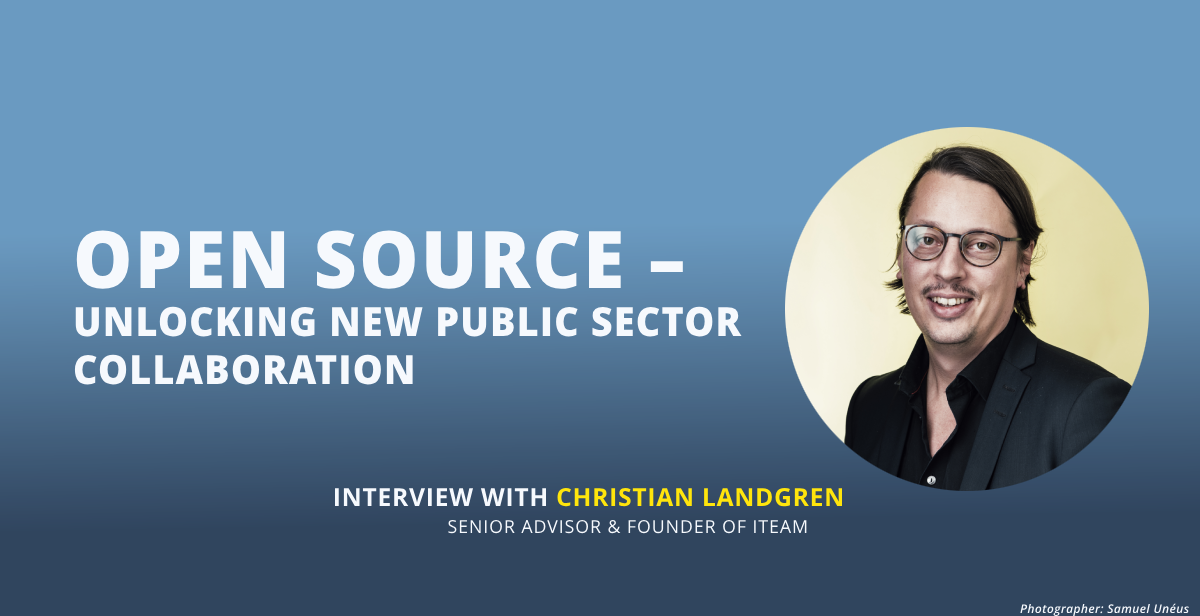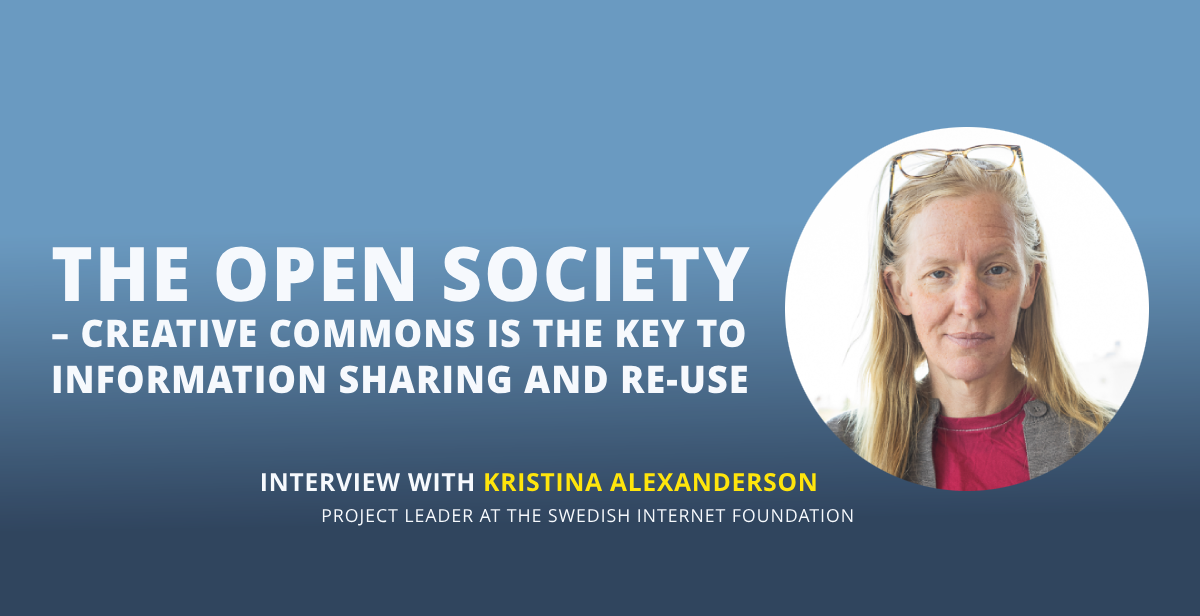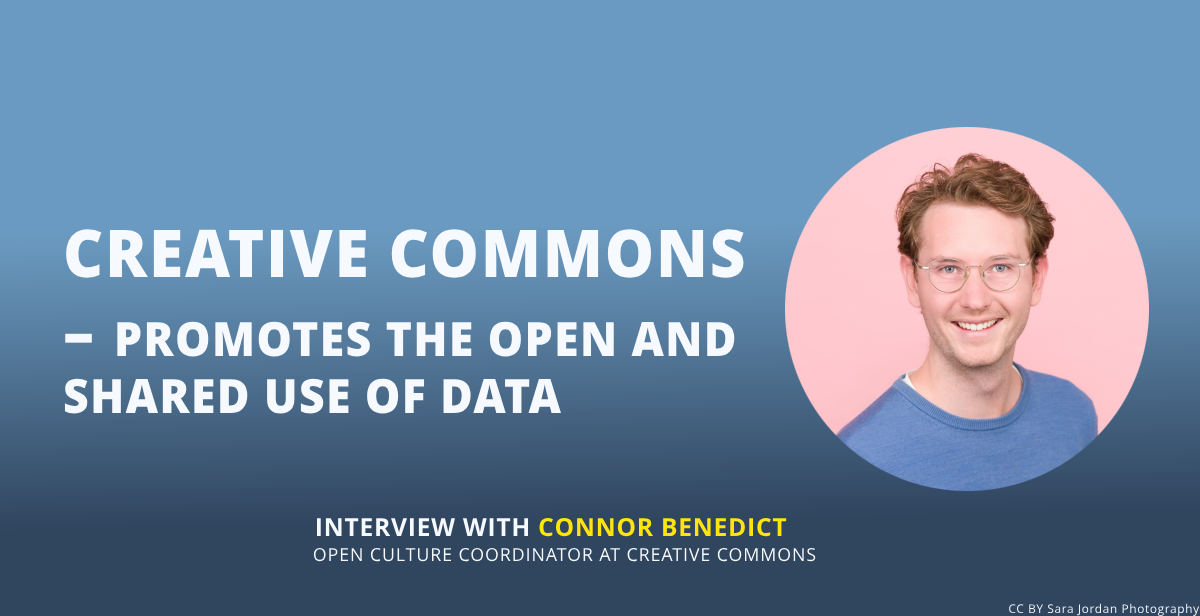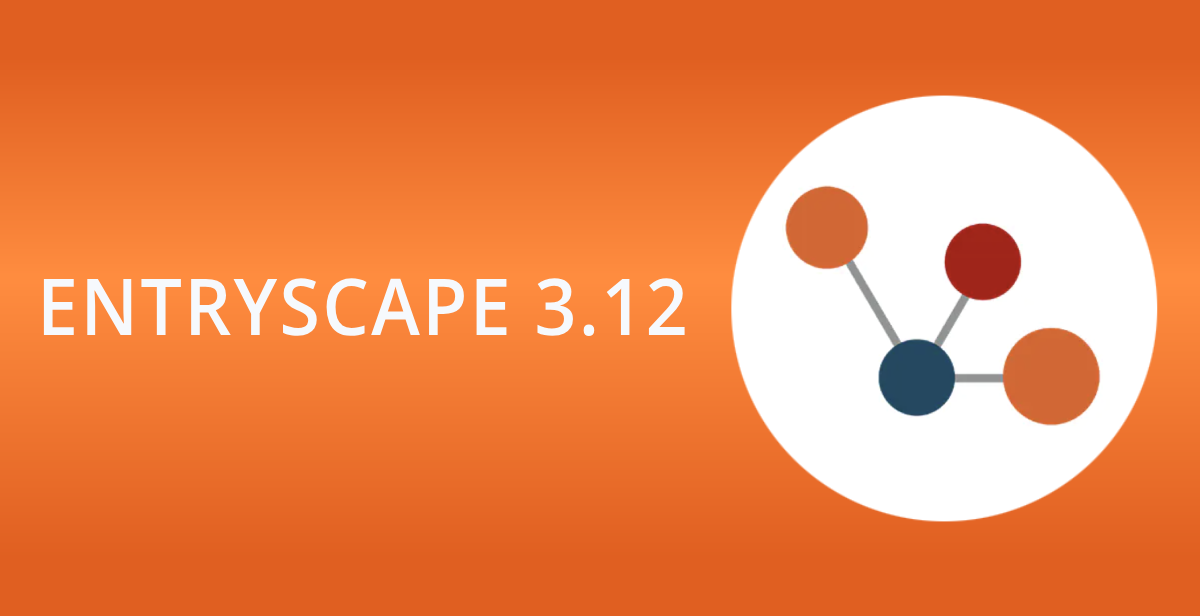Christian Landgren is a senior advisor and founder of the IT company Iteam. He is also a strong advocate for the use of open source software in systems procured by the public sector. The reason? Open source software is free, promotes ingenuity, strengthens interoperability, and enables collaboration across government, community, and regional boundaries.
Christian Landgren is clearly passionate about open source. When he describes the possibilities, nothing seems impossible. He is also not afraid to express his views on the use of open source in the public sector:
– We can start talking about procurement, he exclaims almost before we have had time to sit down for the interview. He continues:
– Everything would be so much easier if more people used open source. They wouldn’t be stuck with systems they don’t want. Also, you don’t have to buy something that’s free, which software is if it’s based on open source.
Do you want to read this text in Swedish? Click here!
What do you mean, free? you might ask. And what is the difference between open and closed, so-called proprietary, source code? Let us explain. Code, as you know, is instructions to the computer on what to do in different situations. This code is what we call software. Software can be built on closed and open source code.
With open source, the user has full access to the code that makes up the software. This means that the user can use, redistribute, and adapt the software completely to his or her specific needs. The opposite, proprietary software, means that the user cannot change the code of the software. Thus, the user must be the one to adapt their way of working to the software, not the other way around. In addition, users of open source software can easily move their input information as needed, whereas a user of a proprietary solution can sometimes be locked into using only the formats of the specific software. This, in turn, can make an organization dependent on specific vendors’ system solutions. If a closed-source vendor discontinues updates or goes out of business, it can create significant challenges for the customer.
Open Source Promotes Openness and Transparency
The reason MetaSolutions cares about open source is that openness and transparency are a common thread throughout the company. The principles of open source underlie phenomena such as open data and standards. The goal is simply to encourage collaboration, participation, and transparency.
But let’s go back to Landgren’s view that open source should be the standard for public sector procurement. We illustrate a procurement.
Also read: Open Source – Transparency is Key to Secure Data
– There are two ways to do it. Either you do procurement in the traditional way. Then we have meetings, make decisions, and in a year the system is ready to go live. After that, you’re often pretty much locked into the system, says Landgren.
The second option, he describes, is instead a process where you put on your open source glasses. The goal is to find a code solution that is good enough to start with. Maybe you have a case management need for a real estate company. Is there already open source code that handles case management in general that you can adapt? Or are there other real estate companies that have already open-sourced customizations that you can reuse? In that case, the implementation can start the next day and the budget can be spent on customizing the service to meet the needs of the users instead of on licenses.
Share This Story, Choose Your Platform!
If you are looking for a data sharing and metadata management solution through these lenses, one option is EntryScape. EntryScape is based on open source, so it is possible to use the source code. This means that the software can be implemented the next day and then you can order customizations, sponsor further development or build on it yourself if you wish.
Option number two means that after a year, the company has software that is fully customized to their specific needs. The code can then be further developed or reused by others, allowing, for example, several different municipalities to collaborate and share development costs.
Code Requires Ongoing Maintenance
The challenge is that the open source perspective requires a slightly different approach to the purchasing process. For those who want to implement a finished system, there is a clear calculation and a fixed price that can be included in the budget. From that point of view, the company is buying an asset, just like buying new computers. But buying code is a bit like investing in a botanical garden. If it is to serve its purpose, it needs to be maintained, gardeners need to work on it, and it needs to be adapted to new climatic conditions or to the wishes of the citizens.
– Code is never finished. I think this is important to remember. The world is changing, new standards are being developed, and we have new needs, Landgren says, continuing.
– We have to change our mindset, code is not an asset, it is a cost. Code always needs to be maintained and adapted, that’s just the way it is. Code must grow with the business.
What do you think is the biggest prejudice against open source systems?
– That they are less secure than proprietary solutions. Sometimes I have heard people say that: “We can’t work with open source because we’d be giving away personal information.” Such a comment shows that they don’t really understand the difference between data and code. The data, the information contained in the system, can be secure even if the source code is open. In all likelihood, the data is more secure in an open solution.
You believe that publicly funded code should be open as a starting point. Explain more!
– I think it’s strange that we brag about our openness policy, but the code that builds our publicly funded solutions is generally not considered a public document. Sensibly, publicly funded code should be available on request like any other information. To facilitate this, it would be more sustainable in the long run if we applied the openness principle to code as well: all publicly funded code should be open by default, and we need to justify the parts that need to be closed.







